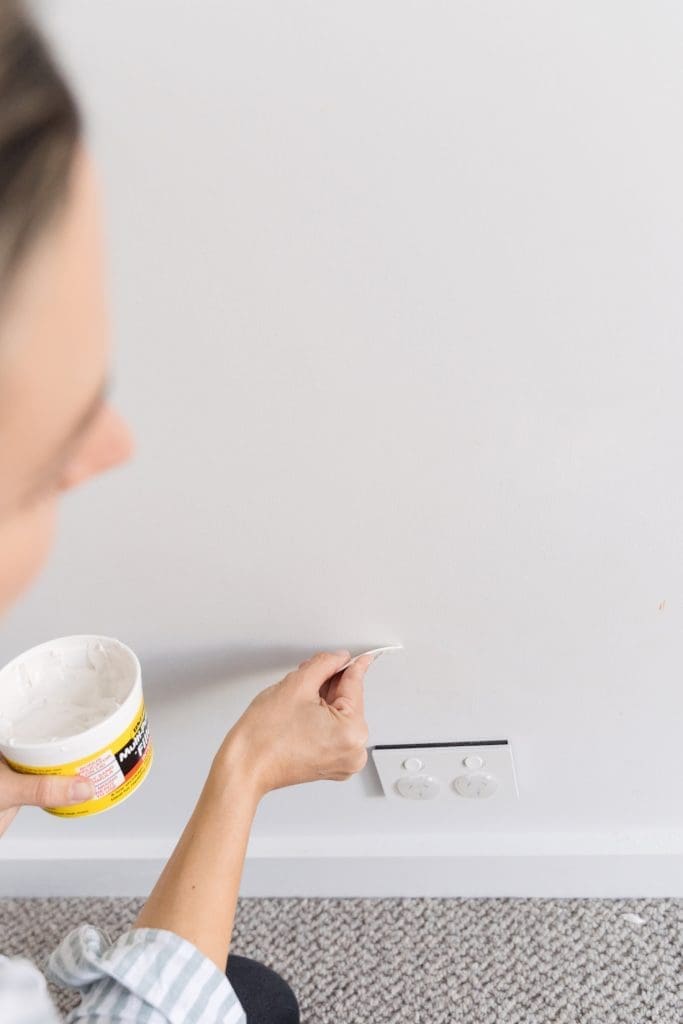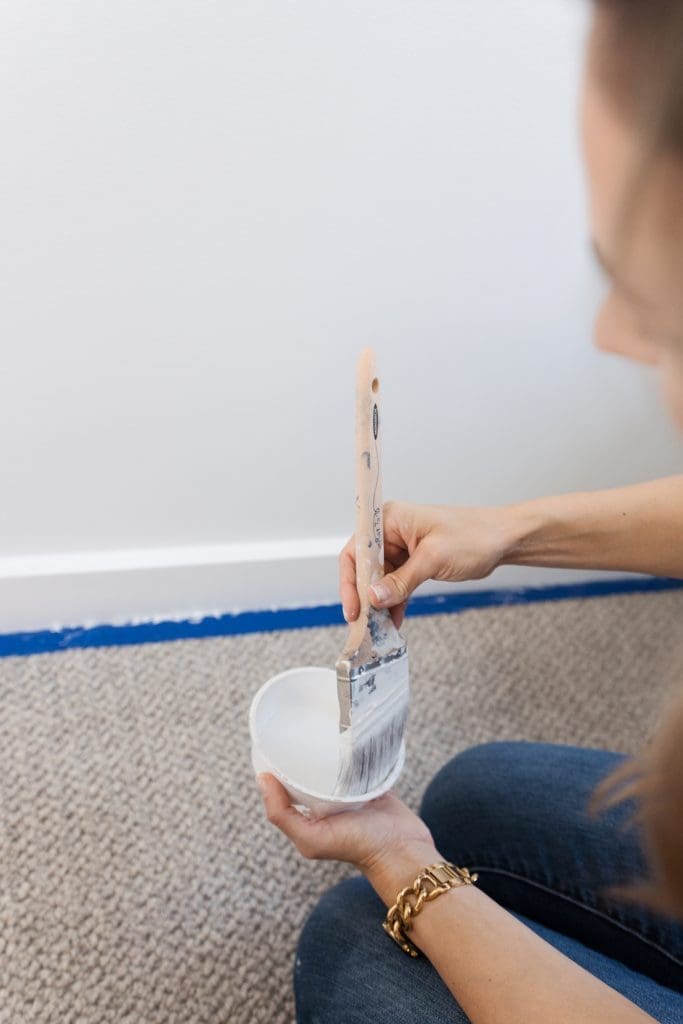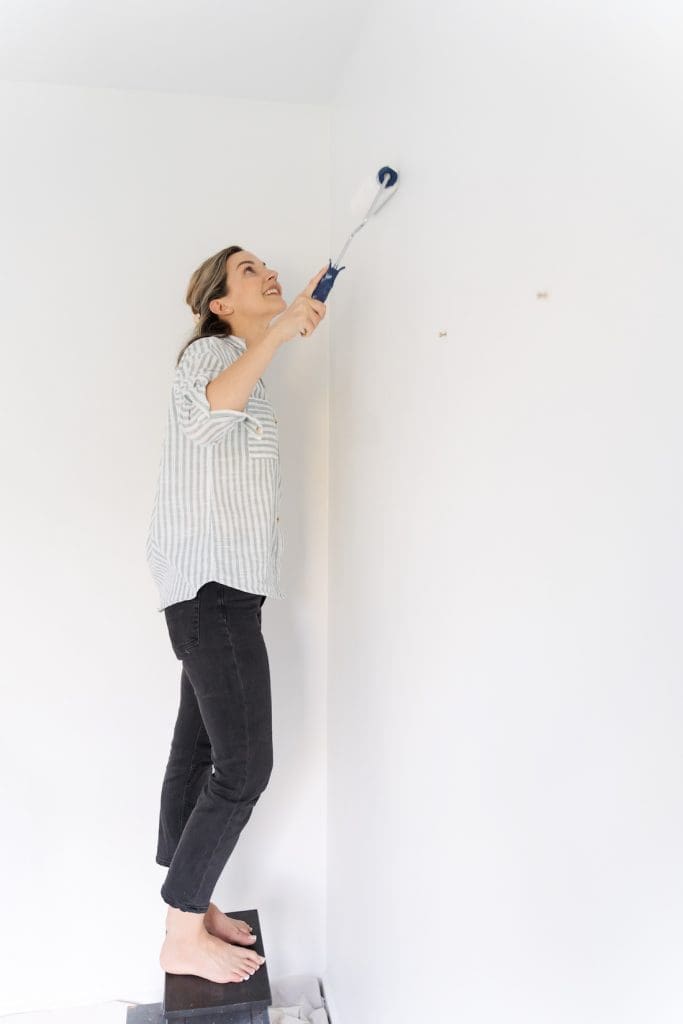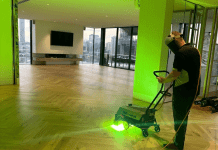When it comes to updating tired interiors, I don’t think there’s a better way to get more bang for buck than by painting. A fresh coat of paint can introduce a more contemporary colour palette and creates a crisp new feel.
However, a poor paint finish can really let your space down. Let me share with you some simple tips to achieve a professional paint finish yourself. Watch the video below or keep on reading for my advice on what products, preparation and technique can help you become a pro house painter in no time!
Related article: The power of paint: Living room makeover on a budget
Related article: Practical tips to get the perfect shade of white paint
1. Prepare walls
The secret to a great paint finish is preparation! This can help you avoid cases like spray paint bubbles, tackiness, stickiness and other paint issues.
How to prepare walls to paint:
- Fill in any dents or cracks with gap filler.
- Once dry, sand until you have a smooth finish.
- Then lightly sand all your walls to remove dirt and debris. (In older homes, you may need to sand back peeling paint with a coarser grit sand paper.)
- Finish by washing the walls using warm water and sugar soap.
You’ll thank yourself when it comes time to paint if you take the time to prepare your walls well!

2. Protect flooring
The last thing you want to do is fix your walls while damaging your floors. Drop sheets aren’t expensive and will protect your floors from splatter. Depending on how steady your hand is, you may also want to use painters tape to tape around the bottom of the skirting and anywhere else you want to get a clean line.
3. Prep-coat or undercoat
If you’re painting onto new plasterboard, you’ll need to use a prep coat first. It’s also a good idea to use prep coat on any other porous surface, such as a brick wall.
“A good prep coat is what makes the difference between an average result and a professional one,” explains Kevin from GoBrush Painting Services. “On surfaces like brick, sealing the wall first means your topcoat goes on smoother and lasts much longer.”
If the wall has already been painted, but you want to change paint colour, I recommend doing an undercoat first. This is especially important when painting a lighter colour OVER a darker colour. One coat of undercoat can save you 2 or 3 top coats trying to kill a strong wall colour.

4. Choose the right paint
Selecting the right paint is just as important as your technique. A high-quality commercial paint can provide superior durability, coverage, and finish, making it a great option for high-traffic areas or spaces that need extra protection. Look for a paint with a washable or scrubbable finish if you’re painting walls in busy areas like hallways, kitchens, or living rooms. Also, consider whether you need a low-VOC or eco-friendly option, especially for indoor spaces with limited ventilation.
How to select to the right paint finish:
- Wall paint: low sheen acrylic
- Trims and doors: semi-gloss acrylic, or traditionally gloss enamel was used (so if you’re painting over enamel paint you will need to use the same finish)
- Ceiling: ceiling paint or matte paint (you don’t want any sheen on your ceiling and you can get this tinted to any colour)
- Bathroom: although you can use regular wall and ceiling paint in a bathroom, I recommend getting a premium paint with mould inhibitors. Most paint brands offer a bathroom specific paint
- Outdoors: select a specially formulated outdoor paint, such as Weathershield.
5. Cutting
I always start by cutting first and that’s the painting you do around the edges of a room and obstructions (like light switches) with a brush.
Firstly, find the right brush. I recommend a bristle that’s at least 5-8cm wide. Generally, the coarser the brush, the better. As this will help you achieve a sharper line. However, if your paint is runny, such as highly vibrant colours or a low VOC paints, you may not be able to hold enough paint on your brush if it’s too stiff. There’s useful information on how to choose the right brush and roller on the Mitre 10 website here.
Then work systematically around the room, painting all the edges of your walls. Your cutting only needs to be 5-10cm wide. Be sure to also paint around any light switches, power points, around window frames, and small sections of wall where a roller won’t fit. Essentially, you are creating a border around the walls and getting into any areas your roller won’t fit.
Tip: don’t use too much paint when cutting or you’ll create obvious streak marks. And keep the paint towards your end bristles to avoid dripping. This will also give you better control of the paint.

6. Rolling
Then it’s time to roll. The trick to rolling well is not to overload or underload your roller — you should give the roller a good dip of paint and roll it back and forth in the tray before moving onto the wall.
Begin rolling at least a roller width away from the side of the wall, rolling up and down in the middle section of the wall. If you roll all the way to the top or bottom in the first few rolls, you’ll push too much paint to the edges of the wall and it will be difficult to control.
Once you feel there isn’t too much paint left on your roller, you can roll all the way to your top cutting and all the way to the bottom.
Work in 1-2 metre sections of wall at a time.
7. Roll off
Once you paint a section of wall, it’s time to roll off.
This is what professional painters do and it’s what’s going to give you a perfect finish.
It simply involves lightly rolling your roller downwards over the section you just painted, lifting your roller away from the wall once you reach the bottom. And then repeating this across the area, making sure to overlap by a third of a roller width each time.
This may seem like it isn’t doing anything but it will smooth and flatten out your paintwork, creating a seamless paint finish.
8. Additional coats
Most walls will need 2 coats of topcoat but sometimes you may need to do additional coats.
If you can see any shadows or inconsistency in the painting, definitely do another coat. Be sure to let the wall dry fully in between coats and always cut and then roll the wall.
If you follow these steps, it is possible to paint your walls like a professional. Do you have other paint tips to share? Pop them in the comments so we can all benefit!
More reno advice

This article was first published in October 2017 and continues to be updated with latest tips and images.






